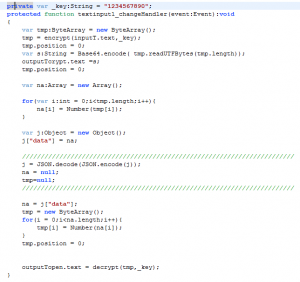I’ve made a little improvement to my development process, in such a way that the scaffolding i do for creating the web services I later use for my flex client are generated in their final form without the need to adjust them.
What i did was make some changes to the controller scaffold template.
The controller.rb template file is located at: [Ruby Home]\lib\ruby\gems\1.8\gems\rails-2.3.4\lib\rails_generator\generators\components\scaffold\templates
Backup the original (or pick it up from here).
Download the modified template
The Template should end up looking like:
class <%= controller_class_name %>Controller < ApplicationController
# GET /<%= table_name %>
# GET /<%= table_name %>.xml
def index
@<%= file_name %> = <%= class_name %>.all
render :xml => @<%= file_name %>
end
# GET /<%= table_name %>/1
# GET /<%= table_name %>/1.xml
def show
@<%= file_name %> = <%= class_name %>.find(params[:id])
render :xml => @<%= file_name %>
end
# GET /<%= table_name %>/new
# GET /<%= table_name %>/new.xml
def new
@<%= file_name %> = <%= class_name %>.new
render :xml => @<%= file_name %>
end
# GET /<%= table_name %>/1/edit
def edit
@<%= file_name %> = <%= class_name %>.find(params[:id])
render :xml => @<%= file_name %>
end
# POST /<%= table_name %>
# POST /<%= table_name %>.xml
def create
@<%= file_name %> = <%= class_name %>.new(params[:<%= file_name %>])
if @<%= file_name %>.save
render :xml => {:notice => ‘<%= class_name %> was successfully created.’}
else
render :xml => {:notice => @<%= file_name %>.errors}
end
end
# PUT /<%= table_name %>/1
# PUT /<%= table_name %>/1.xml
def update
@<%= file_name %> = <%= class_name %>.find(params[:id])
if <%= file_name %>.update_attributes(params[:<%= file_name %>])
render :xml => {:notice => ‘<%= class_name %> was successfully updated.’}
else
render :xml => {:notice => @<%= file_name %>.errors}
end
end
# DELETE /<%= table_name %>/1
# DELETE /<%= table_name %>/1.xml
def destroy
@<%= file_name %> = <%= class_name %>.find(params[:id])
@<%= file_name %>.destroy
render :xml => {:notice => ‘<%= class_name %> was successfully deleted.’}
end
end

